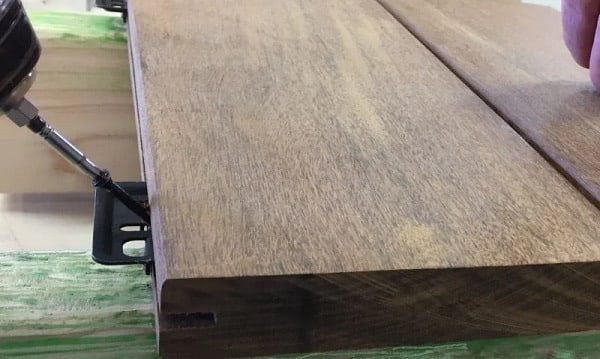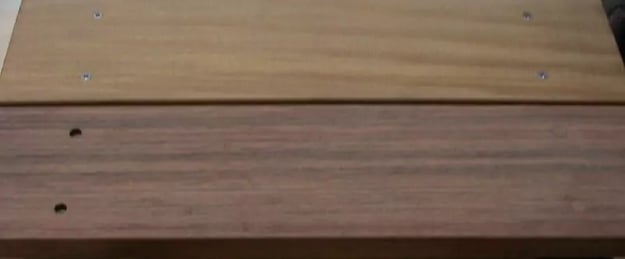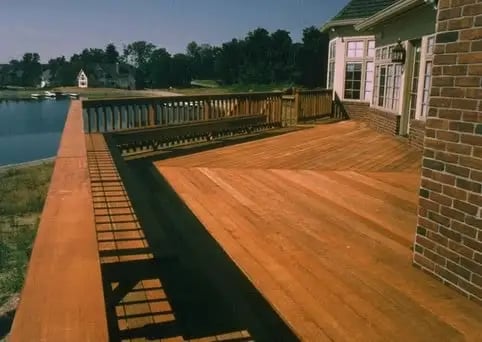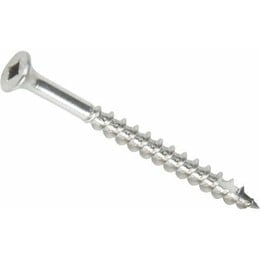
Related Posts



Concealed or hidden deck fasteners can give a great look to deck surfaces. People love them. But concealed fasteners have limitations. Here’s 6 key things you should know before deciding how to fasten your decking.

Hidden or concealed fasteners may look best - but they don't always perform best. Because you don’t really see them, concealed fasteners make a clean, unencumbered look for your wood deck. But please understand, it’s a trade-off. When you use a concealed or hidden deck fastener, you are sacrificing strength for looks.
Concealed fasteners are not as strong as face screws. Screwing deck boards directly through the face of the decking, into your deck joists, is the strongest way to fasten decking. Period.
If a strong, long-lasting deck fastener is your goal, stainless steel deck screws work best. If you don’t like the look of screw heads on your decking, there are ‘trim-head’ deck screws. The heads of trim head deck screws are not as visible, and the fastening is quite strong. Especially with hardwood decking boards.

Looking for the best decking material for your project?
Download the "Ultimate Guide to Selecting the Right Decking"
Exterior deck boards are exposed to all sorts of weather extremes. Heat. Rain. Snow. Exposure to direct sunlight. Natural wood decking expands and contracts with moisture content. All the time. Yes, even kiln dried hardwood decking.
Concealed fasteners typically only attach through one edge of a deck board. The other edge of the deck board is free to ‘float’. As wood deck boards dry, they shrink. When wood decking picks up moisture they expand.
.webp?width=458&height=282&name=file-16356215%20(2).webp) 5/4 x 4 Ipe decking shown with hidden fasteners
5/4 x 4 Ipe decking shown with hidden fasteners
Why? When you use a concealed or hidden fastener for your decking, the side with the screw will ‘stay put’. The other side will ‘move” (expand and contract with moisture gain or loss). This changes the width of the gap between your deck boards. Narrower deck boards expand and contract less than wider deck boards. So, the change in the gap between your deck boards is smaller and less noticeable.
Narrower deck boards provide more fastening power per square foot. When you do the math, you’ll notice that you gain about 50% more fastening over your deck. This makes for a stronger deck.
Thicker deck board are stronger than thinner deck boards. They’re tougher. They help stabilize your deck frame and make a better performing overall deck. So, a thicker, narrower deck board is ideal with hidden fasteners. When using concealed deck fasteners, 5/4 x 4 nominal decking and 21 mm x 4 nominal decking sizes perform best.
The Mataverde Deck Clip concealed fastener is black for lower visibility, stainless steel for greater strength and durability, and longer for better holding power.
Check it out for yourself. Request a FREE Mataverde Concealed Fastener today.
There are certain places and conditions where you really shouldn’t even consider using a concealed fastener. Here’s a short list of places to not use concealed or hidden deck fasteners:
We have tested nearly every deck screw, concealed and hidden deck fastener on the market. Some work better than others. Some concealed deck fasteners only work with a specific decking material. For example, many of the composite decking options require a particular fastener.
Some of the 'bang-in' style concealed fasteners will split the wood decking, especially hardwood decking. Concealed fasteners for hardwood decking work best with pre-grooved decking. Thermally modified decking is often brittle and should be screwed down for best performance. Softwood decking may be screwed down or attached with a hidden fastener.
 Mataverde Deck Clip Concealed Fastener works great with pre-grooved wood decking
Mataverde Deck Clip Concealed Fastener works great with pre-grooved wood decking
Looking for stunning deck design ideas for your project?
Download the "Deck Design Ideas eBook:
61 pages with over 150 real deck project ideas
RELATED:


